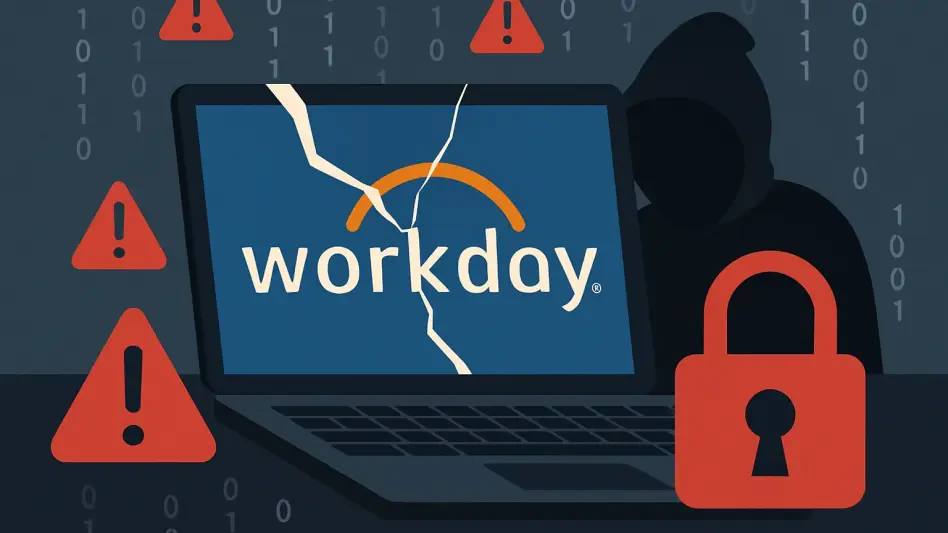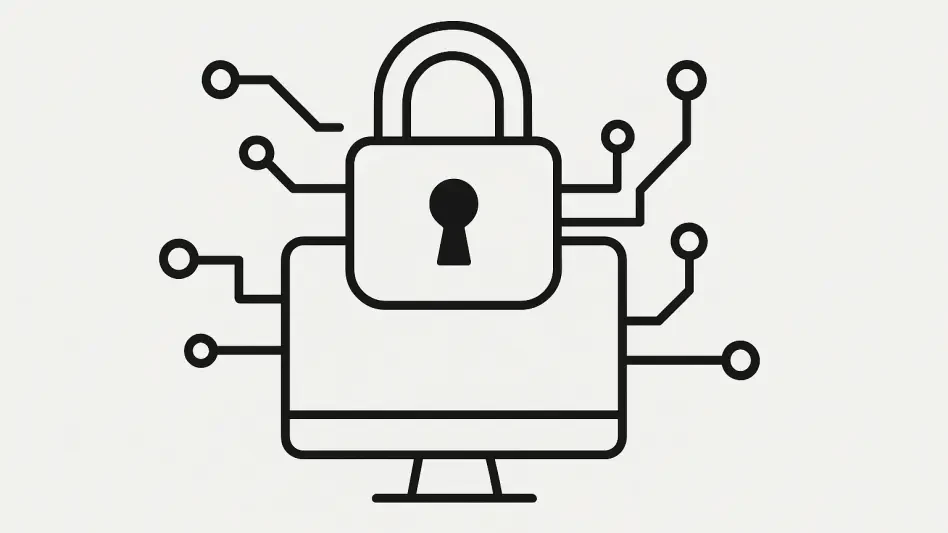Imagine a world where cybercriminals can steal your credentials, bypass multi-factor authentication, and hijack your online accounts with just a few clicks, all without needing deep technical expertise. This chilling reality is brought to life by VoidProxy, a sophisticated Phishing-as-a-Service (PhaaS) platform that has emerged as a formidable threat in the cybersecurity landscape. Designed to target high-value accounts on widely used services like Microsoft and Google, this tool empowers attackers to orchestrate advanced phishing campaigns with alarming ease, posing a significant challenge to individuals and organizations alike.
The rise of PhaaS platforms marks a troubling evolution in cybercrime, where malicious actors no longer need to build their own tools or infrastructure. Instead, they can rent ready-made solutions like VoidProxy, which streamline the process of launching deceptive attacks. This democratization of cybercrime tools has lowered the barrier to entry, enabling even less-skilled attackers to target sensitive data on a massive scale.
What sets this platform apart is its ability to evade traditional security measures while exploiting human trust through meticulously crafted scams. As phishing attacks grow more complex, understanding the mechanisms behind such platforms becomes critical for developing effective defenses. This review delves into the inner workings of VoidProxy, exploring its features, operational tactics, and the broader implications for cybersecurity.
Technical Features and Attack Mechanisms
Adversary-in-the-Middle: A Stealthy Interception Tactic
At the heart of VoidProxy’s effectiveness lies its use of the Adversary-in-the-Middle (AitM) technique, a method that allows attackers to position themselves between a user and a legitimate service. By intercepting communications in real-time, the platform captures sensitive information such as user credentials, multi-factor authentication codes, and session cookies. This enables attackers to mimic authentic user sessions, gaining unauthorized access to accounts while sidestepping standard security protocols.
The precision of this approach is particularly concerning because it renders many conventional safeguards ineffective. Once session cookies are stolen, attackers can maintain access even after a user logs out or changes passwords, often leaving victims unaware of the breach. This capability to operate silently amplifies the platform’s threat level, making it a preferred choice for targeting high-stakes accounts.
Deceptive Entry Points and User Manipulation
The initial stage of a VoidProxy attack often begins with a seemingly harmless email, crafted to appear as though it originates from a trusted source. Sent from compromised accounts of legitimate Email Service Providers, these messages are designed to bypass spam filters and lure recipients into clicking malicious links. Such tactics exploit the inherent trust users place in familiar senders, increasing the likelihood of engagement.
Once clicked, victims are directed to counterfeit login pages that replicate the look and feel of genuine Microsoft or Google interfaces. These fake portals are so convincing that even cautious users may unknowingly submit their credentials, handing over the keys to their digital identities. The seamless integration of deception and technology in this process underscores the platform’s dangerous sophistication.
Operational Design and Evasion Strategies
A Dual-Layered Architecture for Anonymity
VoidProxy’s infrastructure is built with evasion in mind, featuring a two-tier design that separates a disposable front-end from a resilient back-end. This setup allows attackers to abandon compromised components without disrupting core operations, effectively dodging detection by security systems. Such adaptability ensures the platform remains operational even under scrutiny, posing a persistent challenge to threat hunters.
Further bolstering its defenses are anti-analysis measures like redirects and Cloudflare CAPTCHA challenges, which obstruct automated scans and manual investigations. By leveraging compromised email accounts as part of its delivery mechanism, VoidProxy adds another layer of obfuscation, blending malicious activity with legitimate traffic. This calculated design makes tracing the platform’s origins or shutting it down exceedingly difficult.
Real-Time Control and Automation
A standout feature of VoidProxy is its admin panel, which serves as a centralized hub for attackers to monitor and manage their campaigns. Stolen data is delivered in real-time, often routed through communication tools like Telegram, enabling immediate exploitation of captured information. This rapid feedback loop enhances the platform’s efficiency, allowing cybercriminals to act swiftly on compromised accounts.
The high degree of automation embedded in the system simplifies the execution of large-scale phishing efforts. Attackers can orchestrate widespread attacks with minimal manual intervention, scaling their operations to target thousands of users simultaneously. This combination of speed and automation positions VoidProxy as a formidable tool in the hands of malicious actors seeking maximum impact with minimal effort.
Impact on Cybersecurity and Emerging Trends
Escalating Complexity in Phishing Threats
The advent of PhaaS platforms like VoidProxy signals a shift toward more intricate and accessible phishing attacks. By offering pre-built tools and infrastructure, these services enable cybercriminals to focus on targeting high-value accounts rather than developing their own attack methods. This trend reflects a broader movement in cybercrime, where efficiency and scalability take precedence over traditional, labor-intensive hacking techniques.
As these platforms evolve, they increasingly bypass established defenses such as multi-factor authentication, exploiting gaps in user awareness and system security. The ability to target widely used services with tailored, convincing scams heightens the risk to both personal and organizational data. Keeping pace with this rapid progression demands a reevaluation of current protective measures.
Detection Breakthroughs and Real-World Risks
The real-world consequences of VoidProxy attacks are profound, with users of popular services facing heightened risks of data theft and account compromise. Personal information, financial details, and corporate secrets are all at stake when attackers gain access through such sophisticated means. The scale of potential damage underscores the urgent need for robust countermeasures.
A critical turning point in understanding this threat came through its failure to breach accounts protected by advanced, phishing-resistant authenticators like Okta FastPass. This incident provided valuable insights into the platform’s operations, revealing its tactics and limitations. Such detection successes highlight the importance of innovative authentication solutions in mitigating the impact of advanced phishing schemes.
Challenges in Countering Sophisticated Threats
Navigating Technical Obstacles
Detecting and mitigating VoidProxy poses significant technical challenges due to its evasive infrastructure and anti-analysis tactics. The platform’s ability to discard compromised elements while maintaining functionality frustrates efforts to dismantle its operations. Security teams must contend with a constantly shifting attack surface, where traditional tracking methods often fall short.
Beyond the platform itself, the broader cybersecurity landscape struggles to keep up with the automation and scalability of PhaaS offerings. These services are designed to outmaneuver static defenses, exploiting the lag between threat emergence and response deployment. Addressing this gap requires a shift toward proactive, adaptive security frameworks.
The Need for Continuous Innovation
Efforts to combat VoidProxy and similar threats are ongoing, but the pace of innovation among cybercriminals often outstrips defensive advancements. The reliance on automated systems for large-scale attacks complicates attribution and takedown initiatives, as attackers can quickly pivot to new tactics. This dynamic environment demands sustained investment in cutting-edge technologies and strategies.
Collaboration across industries and with research communities remains essential to stay ahead of evolving risks. Sharing intelligence on platforms like VoidProxy can accelerate the development of effective countermeasures, but such efforts must be matched by a commitment to rapid implementation. The challenge lies in balancing reactive responses with forward-thinking prevention.
Looking Ahead: The Future of Phishing Defenses
Building Resilient Technologies
The trajectory of cybersecurity in response to tools like VoidProxy points toward the development of phishing-resistant technologies as a cornerstone of defense. Solutions that prevent credential theft by design, rather than relying on user vigilance, are poised to become standard in safeguarding digital identities. Over the next few years, from 2025 to 2027, expect significant strides in embedding such mechanisms into everyday platforms.
Emerging authentication methods, such as biometrics and hardware-based tokens, offer promising avenues for neutralizing AitM tactics. These approaches aim to eliminate the vulnerabilities exploited by phishing platforms, creating a more secure user experience. The focus on resilience over reaction could redefine how online trust is established and maintained.
Strengthening Collective Defenses
The long-term battle against phishing will hinge on industry-wide collaboration and heightened user awareness. Organizations must prioritize educating employees and customers about recognizing deceptive tactics, while technology providers work to integrate advanced detection into their systems. A unified approach can disrupt the operational models of PhaaS platforms, reducing their profitability and appeal to cybercriminals.
Investment in real-time threat intelligence sharing will also play a pivotal role in anticipating and countering new phishing strategies. By fostering a culture of transparency and cooperation, the cybersecurity community can build a more formidable barrier against automated threats. The path forward requires a blend of innovation, education, and partnership to ensure lasting protection.
Final Reflections and Next Steps
Looking back, the exploration of VoidProxy revealed a highly automated and evasive phishing platform that challenged even the most robust security measures through its cunning use of AitM techniques. Its sophisticated infrastructure and real-time data delivery capabilities exposed critical vulnerabilities in traditional defenses, while its failure against phishing-resistant tools offered a glimmer of hope for effective countermeasures.
Moving forward, the emphasis must shift to actionable strategies, such as accelerating the adoption of advanced authentication solutions across industries. Organizations should consider auditing their current security postures to identify gaps that platforms like VoidProxy could exploit, while investing in employee training to bolster the human element of defense. These steps, combined with ongoing research into emerging threats, provide a practical roadmap for mitigating risks.
Ultimately, the fight against sophisticated phishing requires a proactive stance, with a focus on developing technologies and policies that anticipate rather than react to cybercrime trends. By fostering collaboration and prioritizing innovation, the cybersecurity community can take significant strides toward safeguarding digital ecosystems from the ever-looming specter of platforms designed to deceive and destroy.








